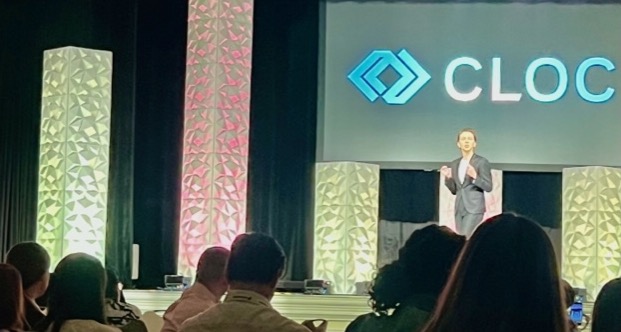eDiscovery Daily Blog
Turning CLOC 2023 Learnings into Action
By Catherine Ostheimer
Last month’s Corporate Legal Operations Consortium (CLOC) Global Institute was an educational and networking event powerhouse, offering over 75 educational sessions and multiple opportunities for networking for those interested in the latest ways to transform legal and get more work done well, and efficiently.
If you have read some of the excellent recaps already published, you will know that the topics dominating the agenda included generative AI, creating a world class legal function, and improving operations in the CLOC Core 12 legal operations work areas, including contract lifecycle management, case management and eDiscovery.
In her talk “The Next Frontier of Legal Work: Generative AI,” Mary O’Carroll, chief community officer, Ironclad, and co-founder of CLOC, described generative AI as a front burner topic “that has the potential to change everything” when it comes to legal work. She suggested to 1) learn from other industries and to see how they are using it, 2) have clear processes and data governance in place to get the most out of it, and 3) be committed to it as it’s a fast-changing conversation and its capability to evolve legal work, i.e., redlining a contract based on your playbook, changes often.
Many other insights were shared. Key takeaways include advice shared in a panel on building a world class legal function by Megan Niedermeyer, chief legal officer at Apollo.io and Akshay Verma, head of legal operations at Coinbase, on how to implement changes to a risk adverse group: lawyers. Megan explained that the legal department is “the last business to be SaaS-fied.” Today more legal department leaders are open to turning to cloud-based technology to streamline work and improve outcomes. She advised that putting new technology in place successfully requires having a clear vision for your department. She also suggested that a technologist and a project manager are two key hires that will help with implementation. Verma shared that it’s important to remember that people are self-interest based. In rolling out a new way of working, you need to center communications on a common pain point. He pointed out that “…part of the legal ops role is playing psychologist and understanding what drives people.”
Now that the conference has ended, what do you do with this information? How do you make it actionable? Where do you get started?
It’s all about prioritizing effort. As CLOC board member, legal operations leader at Netflix and community rockstar Jenn McCarron said in the opening keynote, one of the biggest myths about change is that transformation means doing a lot. This is a fallacy. Burn out is high when there are 20+ initiatives to direct. “…acts of success are often come about often, as a result of what you don’t do,” she advised.
Couple this sage advice with the practical framework offered by the session “What’s the Plan? Actionable Steps to Create Your 30/60/90 Day Plan and Beyond” and you have solid footing at the starting gate of change. Stacy Lettie, Chief of Staff to the General Counsel of Organon and, and Bob Mignanelli, VP and COO at Haleon, provided a framework for managing the first 90 days of being in a legal operations leadership role.
Example steps shared on getting on the right path to be an effective, transformative legal operations leader are as follows:
First 30 days:
- Understand goals of the legal department overall
- Define the department’s focus: vision, mission, and key objectives
- Determine team structure, reporting line
- Meet with each practice area to learn about the services, pain points, what’s working/not working, identify expectations
- Meet with everyone on your team 1:1, listen to understand what drives them, what frustrates them
- Assess existing processes for matter management, onboarding vendor process, etc.
- Understand tech/services landscape, and what contracts are coming up for renewal
- Identify gaps in process and tech
By the 60-day mark:
- Conduct spend analysis and identify where there may be overlap, where are you paying for items you shouldn’t be paying for, etc.
- Pinpoint and execute “quick wins,” e.g., creating outside counsel guidelines
- Update and document most utilized processes
- Understand current data sources
- Create and begin reporting on metrics
By the 90-day mark:
- Devise your strategic plan, to include:
- Corporate/legal department strategy
- Mission, vision, objectives
- Current state analysis
- Gap analysis-current state versus future state
- Resource requirements
- Success/risk factors and timelines
- Ensure implementation goes well
- Gain executive support
- Put strong project management and change management in place
- Build communication plan, to include celebrating success
- Prioritize: Determine the three to four things that will drive the strategy
- Areas may include tackling outside counsel spend, contract lifecycle management, and/or creating an IP system to drive revenue. (At CloudNine, we believe there is also tremendous opportunity in looking at ways to reduce the biggest cost of litigation, eDiscovery.)
And there you have thoughts on ways to put all you learned into action post CLOC and set yourself up for planning for 2024, which will be here before we know it. Ask for a complimentary consultation with us if you want to learn more about how CloudNine can make it easy for you to take control of your eDiscovery costs and develop smart workflows for managing modern data (i.e., Slack/Teams chat data, texts, etc.) in eDiscovery with our SaaS-based solutions and services here.
Catherine Ostheimer is VP, Marketing at CloudNine and has been working in the legal technology industry for 8+ years.

